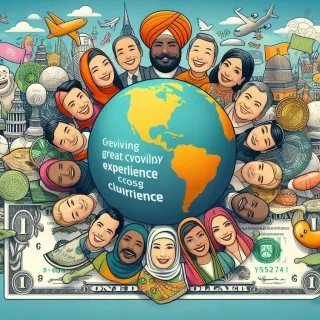Boost Your Team's Inclusion and Productivity with Neurodiversity Training
Positive and easy to implement training in neurodivergence awareness and customer and staff inclusive practice.
Learn how to embrace and support neurodivergent people in your workplace, to create a more inclusive, cohesive and productive team

Neurodiversity awareness and customer inclusive practice
The Neurodiversity Initiative offers flexible training options in neurodivergence awareness and customer inclusive practice for businesses and organisations.

Easy to Implement response practices
Designed by professionals in the field of neurodivergence intervention, to provide simple, best practice solutions for businesses and organisations.

Partners platform and community recognition
A partners platform where businesses and organisations can showcase their commitment to neurodiversity and inclusion, and expand their community recognition and relevance.
Our Programs
Online and In-person training
Flexible training options in neurodivergence awareness and customer inclusive practice.
Awareness Training
Equip yourself and your staff with the right tools to meet the needs of your customers or colleagues who are neurodivergent.

Why gain awareness of neurodivergence when working with customers?
Your customers should feel welcomed
Reduce the unconscious bias of your team: 36% of customers with a disability feel that they receive less support than those without a disability.
Retain business
A person with a disability is three times more likely to bypass an business if their diversity reputation is negative, and twice as likely to discourage others.
The stats
In Australia 1 in 150 people are autistic.
The stats
Know how to change, 57% are unsure of what action to take to become more inclusive their diverse customers.
Why embrace Neurodivergence within your workplace?
Evidence shows that diverse and inclusive teams outperform their peers by 80% in team-based assessments*
People living with neurodivergence are 30% more productive than non-neurodivergent people^
People living with autism are three times more likely to be unemployed than those living with a disability and eight times more than those without.
Diverse teams are happier and more productive, too. In fact, neurodiversity is a competitive advantage according to Harvard Business Review.
*Deloitte Australia research; research report, Sydney 2013. ^Preliminary results: program run by the Australian Department of Human Resources).

Why train with us?
Through our training you will be able to:

Effectively respond to and support neurodivergent individuals in the community
Retain and recruit top talent, by actively recognising that workplace diversity, equity, and inclusion are good for employees and businesses.
Evidence-based response practices designed by professionals in the field of neurodivergence intervention.
Build trust and confidence with neurodivergent customers and clients.
Gain skills and understanding to promote best practice to ensure your neurodivergent customers, clients, and staff have positive experiences and outcomes.
You'll also be able to
Provide a psychologically safe, welcoming and inclusive environment for neurodivergent people and their families.
Build your confidence in working with individuals withneurodiverse conditions and their families.
Learn how to effectively identify, understand, and respond neurodivergent individuals or people living with sensory needs.
Expand your community recognition and relevance.
Access various levels of training and consulting services that can be tailored to your business and specific industry.

Hear what our community have to say . . .

Hear what our community have to say . . .

Neurodiversity Articles
Neurodiversity and the Holidays: 12 Reasons They Are Difficult and My Plan to Make Them Better
Insightful Reflections: Jenna Grace shares a personal and insightful look into the challenges faced by individuals with autism during the holidays. Raw Realism: The article provides a raw and real ap... ...more
neurodiversity
March 08, 2024•4 min read

Neurodiversity as a Competitive Advantage
The excerpt from Austin and Pizzano highlights the benefits of neurodiversity in the workplace and introduces a composite character, John, to illustrate the unique talents and needs of neurodiverse in... ...more
neurodiversity
March 06, 2024•4 min read

Autism at Work
In this article, Sian Phillips introduces a term divergence and the benefits of neurodiversity in the workplace. Speaking to Eleanor, who identifies as being autistic, they discuss common misconceptio... ...more
neurodiversity
March 04, 2024•2 min read

Customer Diversity: Providing Great Customer Experience Across Cultures
While Julia Louis’ article focuses on cultural diversity, the core message is still relevant to neurodiversity and inclusive practice. Contemporary businesses are seeing the importance of being respon... ...more
neurodiversity
March 01, 2024•3 min read

Get in touch
Drop us a line to ask any questions or make suggestions for our programs

© All Rights Reserved | The Neurodiversity Initiative





